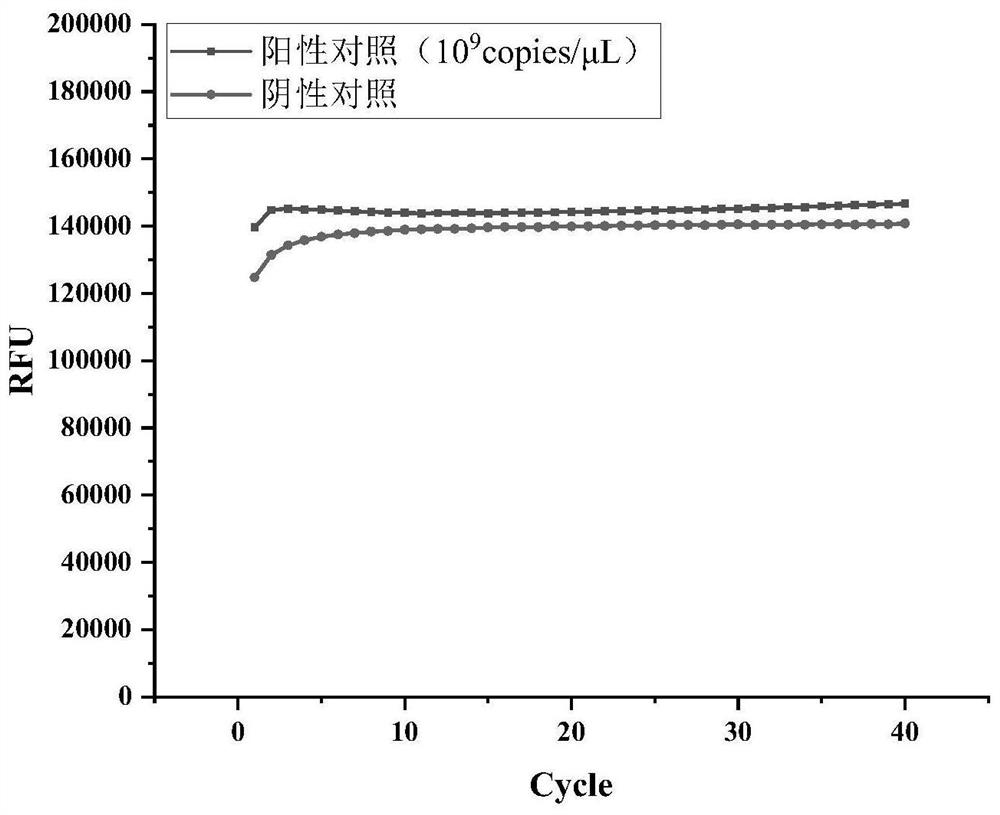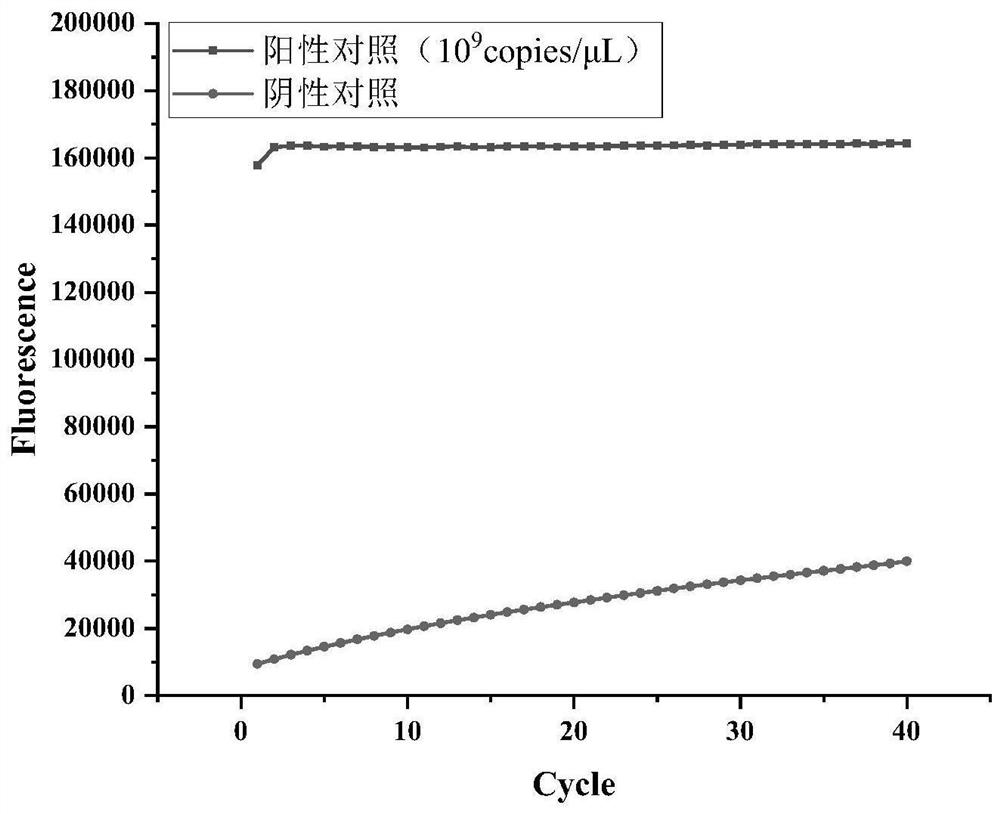CRISPR-Cas13a isothermal detection primer group for detecting Taura syndrome virus and application of CRISPR-Cas13a isothermal detection primer group
A technology for detecting primers and syndromes, applied in the field of biotechnology detection, can solve problems such as being unsuitable for rapid screening at the grassroots level, time-consuming, and complicated to operate.
- Summary
- Abstract
- Description
- Claims
- Application Information
AI Technical Summary
Problems solved by technology
Method used
Image
Examples
Embodiment 1
[0046] 1. RNA standard preparation and crRNA preparation of TSV
[0047] 1.1 Standard preparation of TSV
[0048] The TSV gene (GENBANK: AF277675.1) sequence was inserted between HindⅢ and BamHI of the PUC-57 plasmid to obtain the PUC-57-TSV plasmid. Using the PUC-57-TSV plasmid (entrusted to Anhui General Synthesis) as a template, the primers Add the T7 promoter at the 5' end of the upstream primer when designing, and design the primers as follows:
[0049] TSV-F: TAATACGACTCACTATAGGGCCTCAGGCAACGAA;
[0050] TSV-R: ATTCCAGAGCTTCACAAGGGAAATTCTCAT.
[0051] Prepare PCR amplification reagents according to Table 1 below.
[0052] Table 1
[0053] Reagent Sample volume TSV-F (10μM) 2μL TSV-R (10μM) 2μL Fast PCR Master Mix (Takara) 10 μL wxya 2 o
to a total volume of 20 μL
[0054] The amplified PCR product was purified and recovered, and T7 was transcribed using the T7 High Yield RNA Transcription Kit (Nanjing Nuoweizan), and th...
Embodiment 2
[0098] 1. Experimental materials
[0099] Sample 1: No. XS01, Litopenaeus vannamei shrimp seedlings, provided by Zhejiang Provincial Aquatic Technology Extension Station;
[0100] Sample 2: No. XS02, Litopenaeus vannamei seedlings, provided by Zhejiang Provincial Aquatic Technology Extension Station;
[0101] Sample 3: No. XS03, Litopenaeus vannamei shrimp seedlings, provided by Zhejiang Provincial Aquatic Technology Extension Station;
[0102] Sample 4: No. XS04, Litopenaeus vannamei shrimp seedlings, provided by Zhejiang Provincial Aquatic Technology Extension Station;
[0103] Sample 5: No. XS05, Litopenaeus vannamei shrimp seedlings, provided by Zhejiang Provincial Aquaculture Technology Extension Station;
[0104] Sample 6: No. XS06, Litopenaeus vannamei shrimp seedlings, provided by Zhejiang Provincial Aquatic Technology Extension Station.
[0105] 2. Extraction of Shrimp Taura Syndrome Virus (TSV) RNA
[0106] (1) Weigh 30 mg of the experimental sample. Since the ac...
PUM
| Property | Measurement | Unit |
|---|---|---|
| Sensitivity | aaaaa | aaaaa |
Abstract
Description
Claims
Application Information
 Login to View More
Login to View More - R&D
- Intellectual Property
- Life Sciences
- Materials
- Tech Scout
- Unparalleled Data Quality
- Higher Quality Content
- 60% Fewer Hallucinations
Browse by: Latest US Patents, China's latest patents, Technical Efficacy Thesaurus, Application Domain, Technology Topic, Popular Technical Reports.
© 2025 PatSnap. All rights reserved.Legal|Privacy policy|Modern Slavery Act Transparency Statement|Sitemap|About US| Contact US: help@patsnap.com



